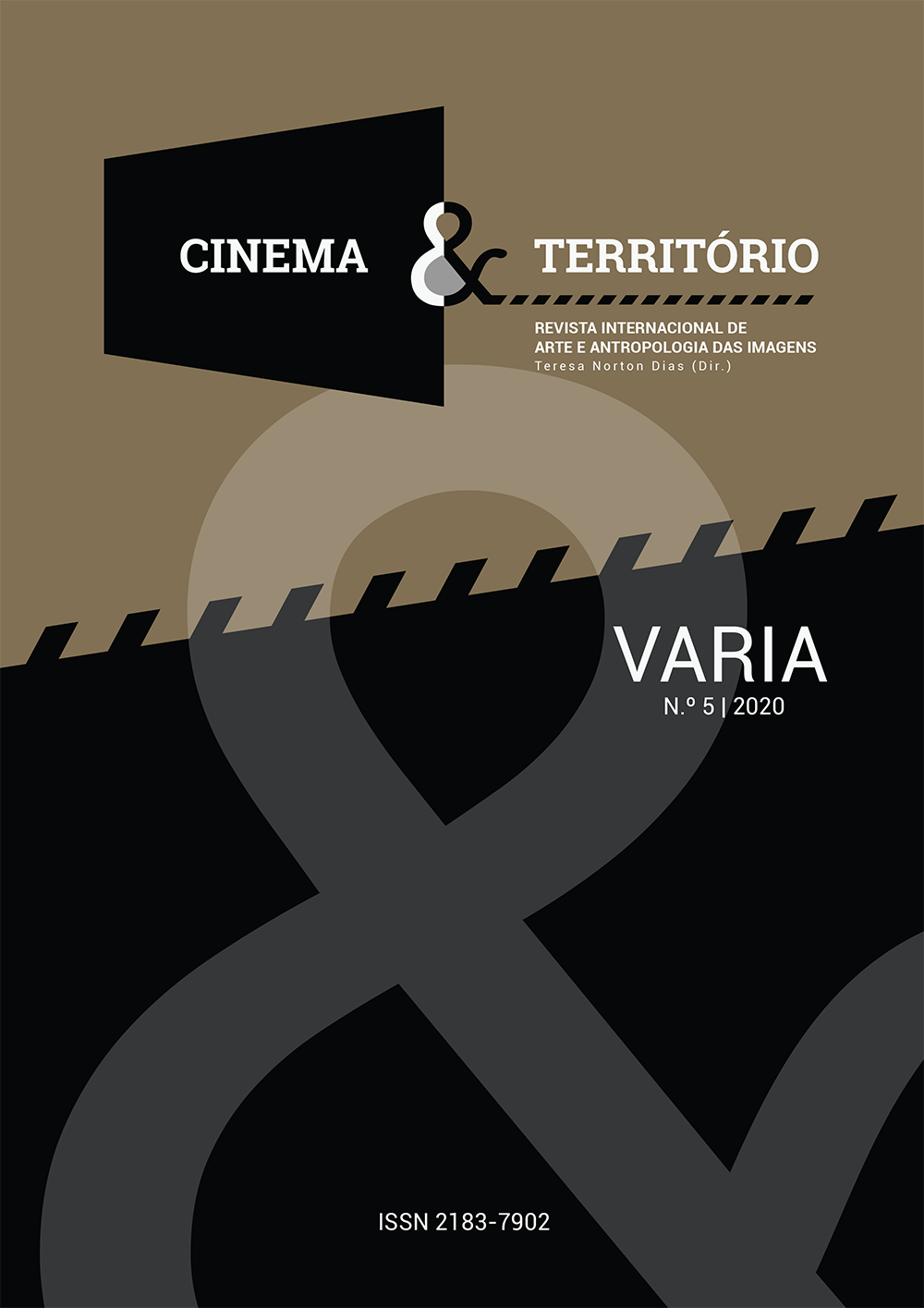The stellar and spectral poetics of "The Pearl Button"
DOI:
https://doi.org/10.34640/52020CTJRPOEKeywords:
Patrício Guzmán, film-essay, affective cartography, landscape, memory, traceAbstract
Based on the analysis of the film The Pearl Botton (2015), by Chilean director Patrício Guzmán, the article will discuss issues related to the documentary essay, such as the subjective voice and the poetic treatment given to the narrative. We will see how Guzmán's film triggers on the viewer powerful thoughts of the world, through a decentralized affective cartography, full of beautiful visual metaphors. By emphasizing the strength of nature, The Pearl Button reinforces the power of the Chilean territory and the resistance and renewal of its population. We will analyze how the director thickens the images of the present with the memorial survival (Didi-Huberman, 2013) through faces, speeches, landscapes and vestiges.
References
Adorno, T. (2003). O ensaio como forma, in Notas de Literatura I. Tradução de Jorge de Almeida. São Paulo: Editora 34, Coleção Espírito Crítico.
Andermann, J. (2012). Expanded Fields: Postdictatorship and the Landscape. Journal of Latin American Cultural Studies 21(2): 165-187.
Benjamin, W. (1984). Origem do drama barroco alemão. São Paulo: Brasiliense.
Benjamin, W. (1987). A obra de arte na era de sua reprodutibilidade técnica. Obras escolhidas I. São Paulo: Brasiliense.
Blanco, M. & Peeren. E. (2013). The Spectralities Reader: Ghosts and Haunting in Contemporary Cultural Theory. New York: Bloomsbury Academic.
Corrigan, T. (2015). O filme-ensaio: desde Montaigne e depois de Marker. Campinas/SP: Papirus.
Chauvin, I. D. (2017). Memorias en el presente: Afecto y espectralidad en imaginarios acuáticos contemporâneos. Aniki, 4 (1), 170-191.
Didi-Huberman, G. (2011). Sobrevivência dos vaga-lumes. Trad. Vera Casa Nova. & Márcia Arbex. Belo Horizonte: UFMG.
Didi-Huberman, G. (2013) A imagem sobrevivente. História da arte e tempo dos fantasmas segundo Aby Warburg [Tradução: Vera Ribeiro]. Rio de Janeiro: Contraponto Editora Ltda e Museu de Arte do Rio [MAR].
Farocki, H. (2013). Prólogo de Georges Didi-Huberman. Desconfiar de las imágenes. Buenos Aires: Edición Buenos Aires.
Gagnebin, J. M. (2014). Limiar, Aura e Rememoração - Ensaios sobre Walter Benjamin. São Paulo: Editora 34.
Gervaiseau, H. (2015). Escrituras e figurações do ensaio. Teixeira, F. E. (Org.). O ensaio no cinema: formação de um quarto domínio das imagens na cultura audiovisual contemporânea. São Paulo: Hucitec.
Ginzburg, J & Sedlmayer, S. (2012). Walter Benjamin: Rastro, aura e história. Belo Horizonte: Editora UFMG.
Godard, J. (1989). Introdução a uma verdadeira história do cinema. São Paulo: Martins Fontes.
Guzmán, P. (2017). Entrevista concedida a Carta Maior. Disponível em . [26 jun. 2020].
Machado, A. (2003). Filme-Ensaio, in Revista Concinnitas, Vol. 2, N. 5. Disponível em <https://www.e-publicacoes.uerj.br/index.php/concinnitas/article/view/42804>. [15 jun. 2020].
Pensky, M. (1993). Melancholy Dialectics: Walter Benjamin and the Play of the Mourning. Baltimore: University of Massachusetts Press.
Rancière, J. (2010). A Ficção Documental: Marker e a ficção da memória. Arte & Ensaios, N. 21. Rio de Janeiro: EBA/UFRJ.
Sadek, I. (2013). Memoria espacializada y arqueología del presente en el cine de Patricio Guzmán. Revista Cine Documental, 8, 28-71. Disponível em <http://revista.cinedocumental.com.ar/memoria-espacializada-y-arqueologia-delpresente-en-el-cine-de-patricio-guzman>. [29 jun. 2020].
Filmografia
Godard, J. (Realizador). (1988-1998). História(s) do Cinema [DVD]. Portugal: Midas Filmes.
Sachse, R. (Produtor) & Guzmán, P. (Realizador). (2010). Nostalgia da Luz. Chile: Atacama produtions.
Sachse, R. (Produtor) & Guzmán, P. (Realizador.) (2015). O Botão de Pérola [DVD]. Rio de Janeiro: IMS.
Sachse, R. (Produtor) & Guzmán, P. (Realizador) (2019). La Cordillera de los Sueños. [DVD]. Suiça: Trigon-film.
Downloads
Published
How to Cite
Issue
Section
License
Copyright (c) 2020 Júlia Vilhena Rodrigues

This work is licensed under a Creative Commons Attribution-NonCommercial 4.0 International License.
For more information follow the link: CC Atribuição-NãoComercial 4.0








